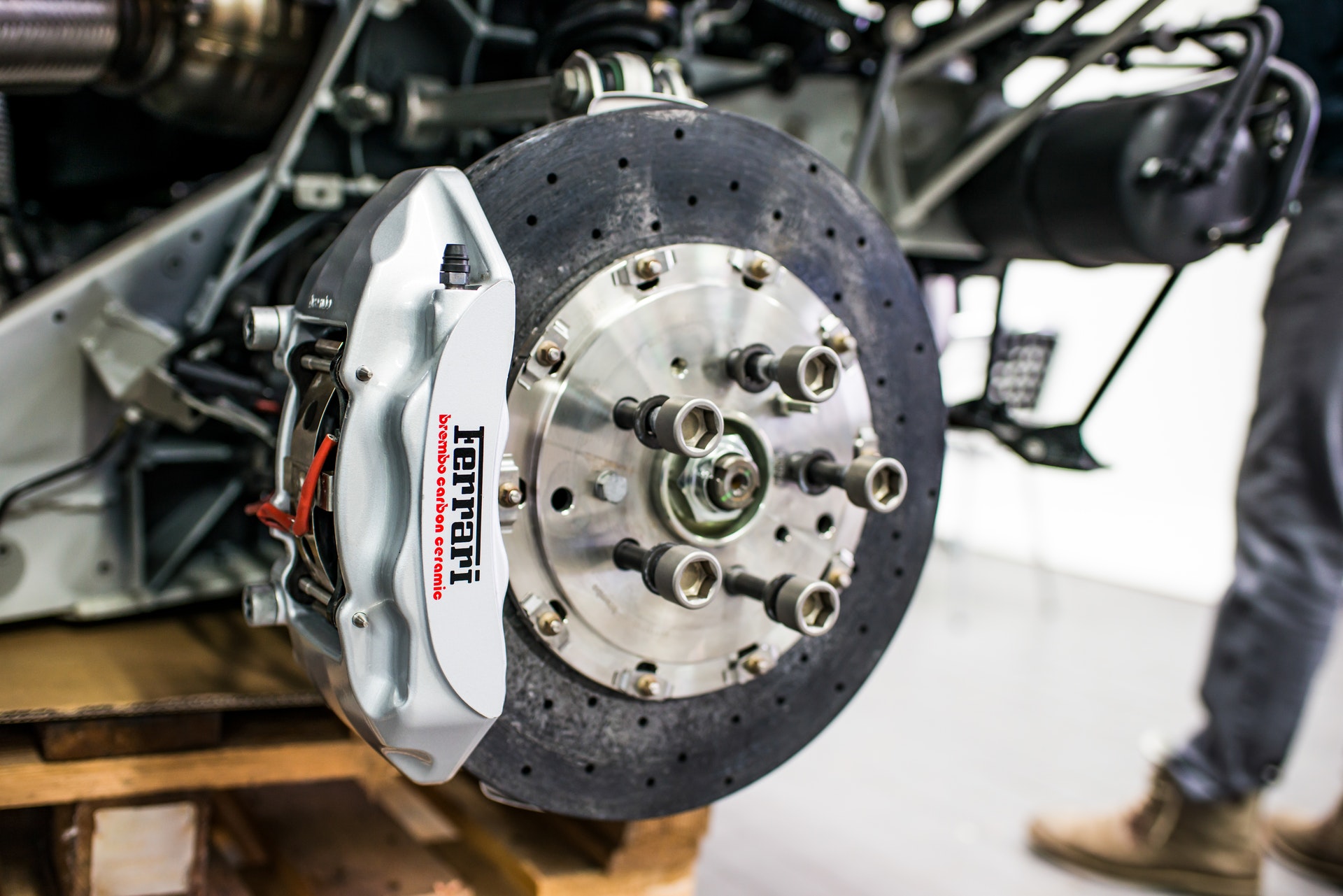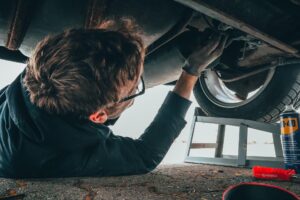
We provide brake repair replacement services in the Grimsby area
A lot is riding on your brakes. Your whole car, in fact. Not to mention you and your passengers. Oh, and all the other drivers on the road. Those brakes are important and need to be kept in excellent condition to perform correctly. So, how does the braking system work, and what are the components that make up your car’s braking system.
How Your Brakes Work
Do you remember riding on your bike? You wanted to stop and pulled a brake lever that forced a pair of rubber brake pads against the wheel. The effect was friction that was created would bring the bike to a stop.
The same principle is true of your car. The brake system takes the kinetic energy of your moving vehicle and converts it to thermal energy through friction. That energy is used to slow and stop your car. The concept is the same; the equipment, well that is a bit more complex.
For instance, where a bicycle might use a cable to activate the brakes, a car relies on hydraulics. A pump located in the engine bay, the master cylinder, exerts force on the hydraulic oil in your brake lines every time you step on the brake pedal. That force is felt at each corner of the vehicle where clamping devices, the calipers, respond by squeezing a pair of brake pads against spinning metal discs attached to each wheel. The brake pads grab the discs like those rubber pads grab a bike wheel. The friction and heat produced bring the wheels – and your car – to a stop.
While most vehicles on the road today feature four-wheel disc brake systems, some older cars have drum brakes. Usually used for the back wheels (although some vehicles had four-wheel drum brakes years ago), drum brakes feature a hollow cylinder (the drum) attached to the axle that spins with the wheel. When you hit the brakes, a pair of brake shoes press against the inside of the drum, as opposed to the outside of a brake disc. Drum brakes can provide more braking force than disc brakes of proportional size. They also last longer and are cheaper to manufacture. But drum brakes are trickier to service. And they are heavy, take a long time to dry off, and can overheat quickly. Disc brakes have become standard on most modern vehicles.
Anti-Lock Brakes
Working right along with your brakes is the ABS. (Anti-lock braking system) When you brake suddenly in an urgent situation, on loose gravel, or on a slippery surface, your wheels would tend to lock up. If that happened, the amount of tyre that is in contact with the road would be reduced to a small patch of rubber. Not enough to stop you very well. Certainly not enough to allow you to steer. When your front wheels stop rotating, the ability to steer your vehicle goes away. Therefore, the ABS is in place to prevent your tyres from locking up.
How does it do that? Special wheel speed sensors located in each of the wheel hubs constantly detect the speed of your wheels. A computer (the ABS Module) monitors data from the sensors and knows when one of your wheels has changed speed. If you press on the brake pedal and one or more wheels stop spinning, the ABS Module instructs a pump to alternately pump and release your brakes up to fifteen times per second. The rapid squeeze and release allow the vehicle to slow down and stop without the wheels ever truly stopping, allowing you to maintain steering control. In some cases, you might stop sooner, other times it might take a bit longer to stop. But either way, you get to keep your car under control.
Components of a Braking System
When it comes to the individual components of your braking system, it depends on whether yours has four-wheel disc brakes (probably the case), four-wheel drum brakes (far less likely), or a combination of the two, discs in the front and drums in the rear (possibly). Regardless, here is a brief breakdown of each brake system component.
• Master Cylinder and Power Brake Booster. The master cylinder is a hydraulic pump that is actuated by the brake pedal. Attached to the pump is a brake fluid reservoir and vacuum assisted power booster to make it easier to press the pedal.
• Disc A brake disc is a heavy metal disc attached to the wheel (actually, to the wheel hub). It spins as the wheel and tyre spins. Brake discs will wear out eventually because of all the friction applied to them. They also are susceptible to overheating if you tend to have aggressive driving habits.
• Brake Pads. Brake pads are made to grab hold of a brake disc. Friction material on the pads contact the disc when you brake, producing friction and heat used for the transfer of kinetic energy to thermal energy. Brake pad materials come in a variety of compositions, from organic to ceramic to semi-metallic compounds. Each has its advantages and disadvantages.
• Brake Shoes. Like brake pads, brake shoes create friction to stop your vehicle. But shoes are more likely to be found on older cars. They create resistance. That is basically what brake shoes do inside a brake drum.
• Brake Drum. Where a disc is grabbed from the outside by the brake pads, a brake drum is grabbed from within by a pair of brake shoes.
• Wheel Cylinder. A hydraulic device called a wheel cylinder presses the brake shoes apart and against the inside of the drum.




